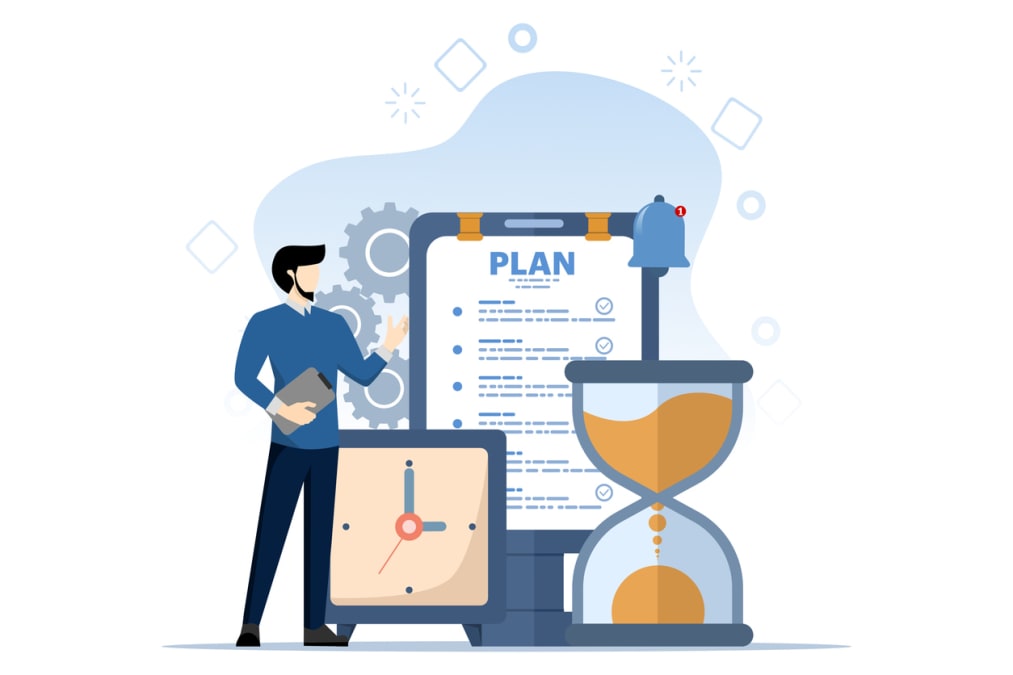If you find yourself searching ‘what is time management’, you’re asking about the method to organize and plan your time between different activities. This article dives into how proficient time management is crucial for efficiency, stress reduction, and achieving a well-rounded life. Get ready to explore practical tips and tools that promise to transform your hours into productivity and purpose.
Key takeaways
- Time management is essential for achieving productivity, reducing stress, and enhancing work-life balance by prioritizing tasks based on urgency and importance.
- Effective time management strategies include prioritizing tasks, planning, and scheduling, utilizing productivity tools and apps like Asana, Trello, and Todoist, and embracing techniques such as time blocking to optimize each hour.
- Building self-discipline, establishing routines, and tailoring a personalized time management blueprint are fundamental to managing time effectively and achieving one’s personal and professional goals.
Unraveling time management: the essence and its significance

Time management is a dynamic process aimed at coordinating tasks and activities to maximize the effectiveness of our efforts. It’s not just about ticking off items from our to-do list, but rather about prioritizing tasks based on their urgency and importance.
Strategically allocating time can enhance our focus and productivity, and ultimately lead to time freedom, opening up opportunities for personal interests and well-being.
Defining time management in the modern world
One could liken time management to wisely packing a 24-slot suitcase to accommodate everything. It involves allocating time effectively to more valuable tasks, leading to improved productivity and a healthier work-life balance.
In this sense, successful time management in the modern world transcends the traditional concept of managing tasks; it’s about managing life itself.
The importance of time management in daily life
In our daily lives, effective time management is of paramount importance. It is a powerful stress reducer, enabling us to:
- Plan our time
- Meet deadlines without feeling overwhelmed
- Minimize procrastination
- Instill a sense of control
- Reduce task delays
Improving our good time management skills can help us achieve these benefits.
Furthermore, the mastery of time management can boost our overall efficiency and productivity, thereby improving outcomes in our personal lives and careers. It simplifies our tasks and results in increased confidence and capability in managing one’s time. The impact of good time management on personal well-being is substantial, reinforcing the notion that it’s not merely for work efficiency, but also for enhancing one’s quality of life.
The impact on quality work and personal fulfillment
Good time management yields quality work and personal fulfillment as by-products. Dedicating protected time for significant projects and priorities ensures that meaningful work progresses. This fosters personal satisfaction and fulfillment, as one can see their goals gradually coming to fruition.
Moreover, effective time management empowers individuals to take control of their schedules, pursue new opportunities, and remain proactive in their endeavors. Recognizing and rewarding personal successes boosts self-esteem and cultivates a sense of achievement, contributing to both professional growth and personal happiness.
Furthermore, adhering to daily routines, which include managing daily tasks, can significantly enhance one’s health, thereby supporting personal fulfillment.
Navigating through time: strategies and tools

The journey through time isn’t a straight path; it’s a labyrinth filled with tasks and activities that require our attention. But fear not, for there exist compasses and maps in the form of strategies and tools for effective time management.
Such strategies and tools include task prioritization, planning and scheduling, and the utilization of technology, which can help us plan and navigate through time with enhanced ease and efficiency.
Prioritizing tasks based on urgency and importance
Mastering time management begins with learning effective task prioritization. This involves categorizing tasks based on their urgency and importance. The Eisenhower Matrix, for instance, helps us distinguish between tasks that we need to:
- Do Now
- Schedule
- Delegate
- Eliminate
This not only streamlines our to-do list but also ensures that we focus on tasks that align with our goals.
Another effective method for prioritizing tasks is the ABCDE Method. This method assigns levels from A (most important) to E (no priority) to tasks, enabling a clear hierarchy of task importance. By identifying key tasks to focus on every day, we can reduce the time spent on less significant activities. This ensures that we are not just busy, but productive.
Planning and scheduling: making every hour count
Effective planning and scheduling are key components of successful time management, beyond just prioritization. Techniques such as time blocking, where the day is divided into specific time blocks for managing particular tasks, can help structure our work and prevent burnout. By prioritizing and scheduling the most important tasks in advance according to their deadlines, we stay on track with our performance and make every hour count.
Productivity apps like Todoist enable us to schedule and organize tasks effectively, bringing structure to our week based on what needs to be accomplished. Other strategies like the Pomodoro Technique and the 52-17 rule maintain our focus and productivity by combining intervals of concentrated work with short breaks. By incorporating these strategies, we can ensure that we are not just passing time, but making time work for us.
Embracing technology: productivity tools and apps
In today’s digital age, we can leverage technology as a valuable ally in effective time management. Productivity tools and apps can play a crucial role in organizing tasks and schedules. Some examples of these tools include:
- Asana: a project management tool that assists with task assignment and progress tracking
- Trello: another project management tool that helps with organizing tasks and visualizing workflows
- Todoist: a task management app that offers powerful task-sorting features
All these time management tools aid in creating an organized workflow, which is essential for efficient time management.
Beyond project management, here are a few tips on tools and strategies that can enhance communication and productivity:
- Loom: allows users to record and share quick video updates
- Freedom: uses block lists to limit distractions
- Using a timer: enforces dedicated work periods
- Turning off notifications: helps maintain a focused environment for completing tasks
Among these tools is Kumospace, a virtual workspace that allows remote teams to collaborate effectively, providing tools for real-time interaction and productivity tracking.
Overcoming time management obstacles

Despite our best efforts, obstacles that can impede our time management will inevitably arise. These include both internal and external time wasters, as well as the challenge of balancing urgent tasks with long-term goals. However, these obstacles are not insurmountable and can be tackled with the right strategies and mindset.
Internal vs. external time wasters
Time wasters can come in various forms, both internal and external. Internal time wasters stem from personal habits, such as a lack of self-control and a tendency to procrastinate. External time wasters, on the other hand, include excessive workloads, job constraints, and the lure of social interactions.
We can develop strategies to mitigate these time wasters, such as disabling chat notifications, choosing study environments wisely, and using tools to block social media feeds, once we’ve identified them.
Balancing urgent tasks with long-term goals
Another challenge in time management is striking a balance between urgent tasks and long-term goals. We must take manageable steps toward our long-term goals while addressing urgent tasks. By integrating work on urgent tasks and long-term objectives, we can make steady progress without neglecting immediate responsibilities.
When unexpected tasks arise, it’s essential to prioritize tasks based on what’s urgent or most beneficial at the time for effective time management.
The art of delegation and automation

Delegation and automation, if mastered, can greatly enhance our time management. Delegation is the act of assigning tasks to others, thereby freeing up our time for more important activities.
Conversely, automation can streamline repetitive tasks and allow for a better allocation of human resources to tasks of high impact.
Knowing when to delegate
Knowing when to delegate is crucial in managing time effectively. Tasks that are routine or follow a predictable pattern, as well as tasks that involve keeping up-to-date with frequently changing regulations, should be assigned to those who can dedicate their time to that specialty. To ensure efficiency, it’s important to assign deadlines for these specific tasks.
Delegation not only ensures higher quality outcomes but also allows employees to develop new skills, fostering a deeper sense of commitment and engagement among team members.
Harnessing automation for repetitive tasks
Harnessing automation for repetitive tasks can significantly enhance productivity. Automation can be effectively applied to a variety of tasks, including:
- Invoice processing
- Data entry
- Scheduling appointments
- Lead management
- Data collection
- Email communication
- Reporting
By automating these tasks, we can save hours every week, allowing us to focus on more important tasks.
Cultivating a productive mindset

A key element in effective time management is the cultivation of a productive mindset. This involves building self-discipline and establishing routines, both of which are essential for managing our time effectively and achieving our goals.
By honing these skills, we can set ourselves up for success.
Building self-discipline for effective time management
To build self-discipline for effective time management, we should set realistic goals, concentrate on one task at a time, and reward ourselves upon task completion. By developing self-discipline, we can create clear tasks and adhere to a schedule or framework to complete them in a timely fashion. This not only helps us stay focused but also minimizes the chances of procrastination.
The power of routines in saving time
The significant role of routines in saving time is undeniable. Establishing routines can create predictability in our schedule, minimizing the mental effort in choosing between tasks and thereby decreasing decision fatigue.
Techniques such as time chunking and the Pomodoro technique can help us organize our work into dedicated time blocks, keeping our minds sharp and focused.
Tailoring your time management blueprint

When it comes to time management, a one-size-fits-all approach doesn’t apply. Each of us has unique needs and circumstances that require a tailored approach. By assessing our personal needs and structuring our day for success, we can create a time management blueprint that works for us.
Assessing personal time management needs
To tailor a time management blueprint that suits our needs, we need to assess our personal time management needs. By tracking our daily activities, we can evaluate our present-time usage against our personal and professional priorities. This will help us identify the necessary adjustments we need to make to manage our time effectively.
Structuring your day for success
Once we have assessed our personal time management needs, the next step is structuring our day for success. This involves:
- Identifying and protecting our peak productivity times
- Creating a ‘to-do’ list and ranking items in order of priority
- Structuring more demanding tasks during peak energy hours
By structuring our day effectively, we can ensure that we are not just passing time, but making time work for us.
Integrating Kumospace into your time management strategy

Effective time management goes beyond individual effort; it also entails leveraging the appropriate tools to utilize resources efficiently.
Kumospace is one such tool, a platform that bolsters time management by establishing a virtual office space that fosters both company culture and personal relationships among team members.
Kumospace: a tool for focused work and collaboration

Kumospace is designed with an intuitive interface that mimics real-life interactions, fostering a conducive environment for focused work. Its features include:
- An intuitive interface that mimics real-life interactions
- Spatial audio that allows users to engage in conversations naturally as they would in a physical space
- Reduced distractions and deeper concentration
In addition, Kumospace supports collaboration through features such as screen sharing, virtual rooms, and interactive elements that can be utilized during team sessions.
Streamlining meetings and tasks with Kumospace
The integration of virtual offices into workflows with Kumospace can streamline meetings and tasks, thereby enhancing efficiency. With its strategic approach, Kumospace enhances the efficiency of meetings by streamlining processes and interactions.
By integrating Kumospace into our time management strategy, we can ensure that our time is utilized effectively, thereby enhancing our productivity.
Summary
Mastering the clock is not an impossible feat; it’s a journey that involves understanding the essence of time management, leveraging effective strategies and tools, overcoming time management obstacles, harnessing delegation and automation, cultivating a productive mindset, tailoring a personalized time management blueprint, and integrating helpful tools like Kumospace into our strategy. By embarking on this journey, we can optimize our hours, leading to personal and professional success.
Frequently Asked Questions
By following these 5 key tips, you can improve your time management and productivity: 1. Set reminders for all your tasks. 2. Create a daily planner. 3. Give each task a time limit. 4. Block out distractions. 5. Establish a routine.
Time management is important because it reduces stress, improves work-life balance, provides more time freedom, increases focus, and enhances productivity. These benefits lead to less procrastination and distraction.
Managing time involves setting clear goals, prioritizing tasks, and creating a schedule or to-do list to ensure productivity and efficiency. By following these time management skills, you can effectively manage your time and accomplish your tasks.
The essence of time management is coordinating tasks to maximize effectiveness and prioritizing based on urgency and importance.
Prioritize tasks, plan, and schedule your activities, and utilize technological tools to effectively manage your time.





